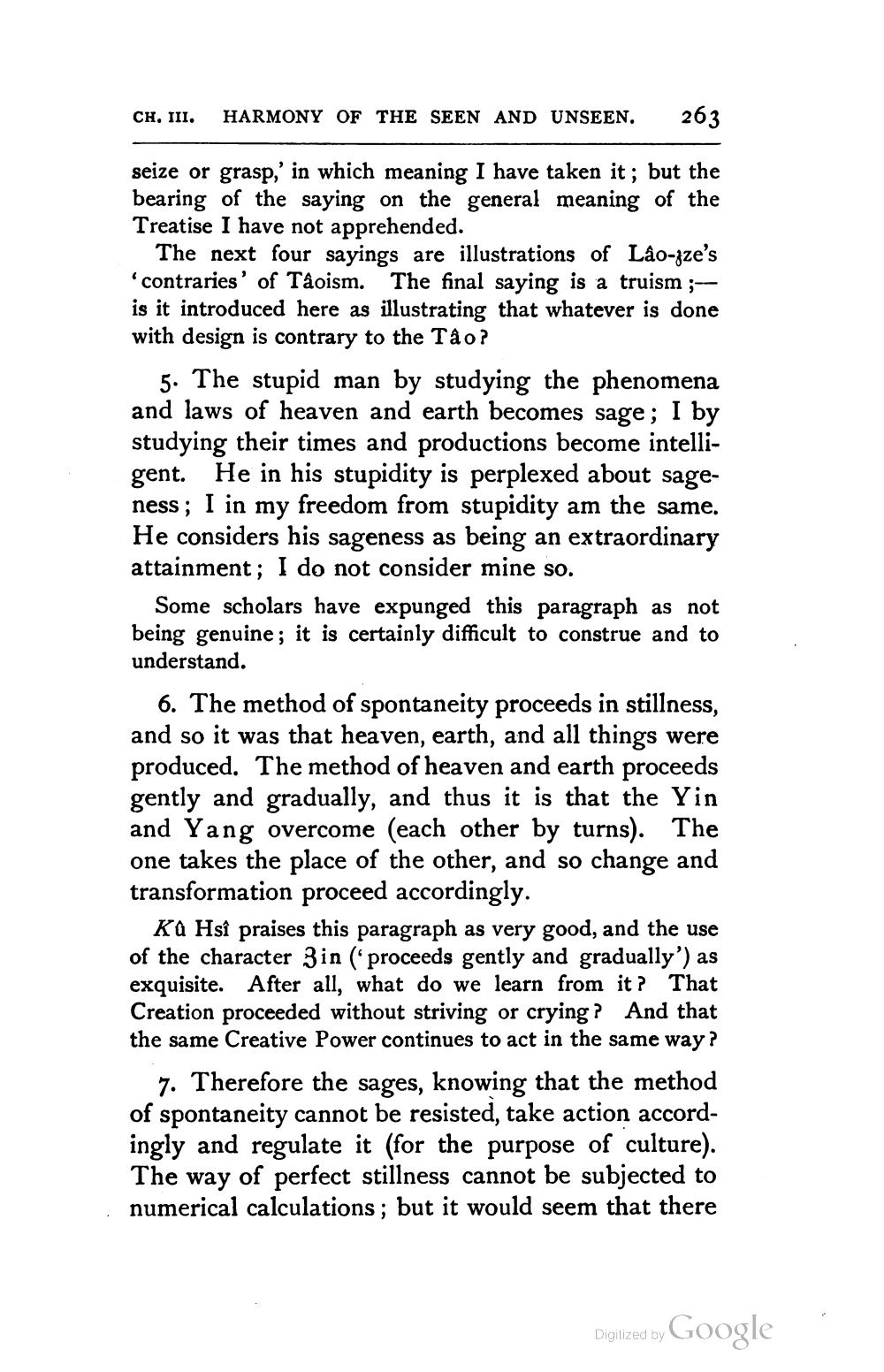________________
CH, III. HARMONY OF THE SEEN AND UNSEEN.
263
seize or grasp,' in which meaning I have taken it; but the bearing of the saying on the general meaning of the Treatise I have not apprehended.
The next four sayings are illustrations of Lâo-gze's 'contraries' of Taoism. The final saying is a truism ;-- is it introduced here as illustrating that whatever is done with design is contrary to the Tào?
5. The stupid man by studying the phenomena and laws of heaven and earth becomes sage; I by studying their times and productions become intelligent. He in his stupidity is perplexed about sageness; I in my freedom from stupidity am the same. He considers his sageness as being an extraordinary attainment; I do not consider mine so.
Some scholars have expunged this paragraph as not being genuine; it is certainly difficult to construe and to understand.
6. The method of spontaneity proceeds in stillness, and so it was that heaven, earth, and all things were produced. The method of heaven and earth proceeds gently and gradually, and thus it is that the Yin and Yang overcome (each other by turns). The one takes the place of the other, and so change and transformation proceed accordingly.
Ka Hsî praises this paragraph as very good, and the use of the character Zin ('proceeds gently and gradually') as exquisite. After all, what do we learn from it? That Creation proceeded without striving or crying? And that the same Creative Power continues to act in the same way?
7. Therefore the sages, knowing that the method of spontaneity cannot be resisted, take action accordingly and regulate it (for the purpose of culture). The way of perfect stillness cannot be subjected to numerical calculations; but it would seem that there
Dignized by Google
Digitized by U




